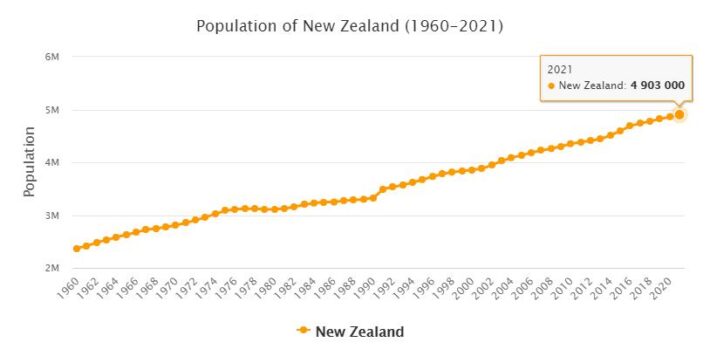New Zealand is like the earth’s very own geological museum and treasure trove – with green meadows, volcanic mountains, snow peaks in the southern Alps, glaciers, hot springs, bubbling mud fields, clear-water lakes and deep fjords. The Cook Strait separates the North and South Islands of the country. With a tour of New Zealand, you can see the most amazing destinations on both the South and North Islands. Landscapes range from snow-capped mountains to rainforests and sandy beaches.
- AbbreviationFinder.org: Provides most commonly used acronyms and abbreviations for New Zealand. Also includes location map, major cities, and country overview.
Yearbook 2012
New Zealand. In February, a year after the earthquake in the country’s second largest city of Christchurch, a government report on the disaster was presented. The report showed that a six-story TV house that collapsed and resulted in 115 people died was misconstrued. Those who built the TV house in 1986 did not follow the building standards that applied for the house to be earthquake safe.
One year after the earthquake, which was measured at 6.3 on the Richter scale, the death toll had been raised from 181 to 185. On the anniversary of the earthquake, February 22, several memorial moments were held for those killed.
The government wants the authorities to be able to intern refugee groups. In May, Prime Minister John Key and Immigration Minister Nathan Guy submitted a proposal to amend the asylum laws. According to the proposal, the authorities would have the right to intern a refugee group of at least ten people for six months. The purpose of the change in law, which was to be discussed further in various instances, was to prevent large numbers of boat refugees from going to New Zealand, which Australia had problems with. No boat refugees had yet arrived in New Zealand, but the issue had been raised in April when a group of Chinese asylum seekers stopped in Australia said they were on their way to New Zealand. The opposition party Labor was opposed to the law change.
In June, New Zealand and the United States signed an agreement on enhanced defense cooperation. The agreement was signed in Washington by New Zealand Defense Minister Jonathan Coleman and his US counterpart Leon Panetta. The agreement, which is a continuation of the 2010 Wellington Declaration, includes, among other things, maritime security and disaster response. In the same month, New Zealand also signed a defense cooperation agreement with NATO. The agreement was to formalize the cooperation with NATO that New Zealand had in practice already since 2003, when the country joined the NATO-led ISAF force in Afghanistan.
Defense Minister Jonathan Coleman announced in September that New Zealand would take its troops home from Afghanistan in April 2013. The New Zealanders are part of the ISAF international security force and consisted of about 140 people in the fall of 2012. About ten New Zealand soldiers had died during the mission in Afghanistan, five of them in August 2012.
Three people died and tens were injured when a tornado swept through Auckland’s suburbs December 6. In addition, many houses were destroyed or damaged. It was the second tornado in New Zealand’s largest city in less than two years.
Country data
Area: 269,652 km2 (world ranking: 74)
Population: 4,794,000
Population density: 18 per km2 (as of 2017, world ranking: 122)
Capital: Wellington
Official languages: English, Maori
Gross domestic product: 205.9 billion US $; Real growth: 3.0%
Gross national product (GNP, per resident and year): 38,970 US$
Currency: Cook Islands dollar (Ci $)
Embassy
Friedrichstr. 60, 10117 Berlin
Telephone 030 206210,
Fax 030 20621114www.mfat.govt.nz/germany
Government
Head of State: Elizabeth II, Head of Government: Jacinda Ardern, Outside: Winston Peters
National Day: 6.2. (Waitangi Treaty of 1840)
Administrative division
16 regions and 1 island territory
State and form of government
No written constitution, laws with constitutional character
Parliamentary monarchy (in the Commonwealth)
Parliament: House of Representatives with at least 120 members, election every 3 years Right to
vote from 18 years.
Population: New Zealanders, last census 2013: 4,242,042 residents.
74% European, 12% Asian, 7% Pacific descent, 15% Maori and other
Cities (with population): Alofi as of 2011: 639 residents.
Religions: 13% Catholics, 12% Anglicans, 8% Presbyterians, 8% other Protestants, 3% Methodists, 2% Hindus, 2% Buddhists, 1% Muslims, 1% Maori churches (Ratana, Ringatu etc.) and others; 42% without religion (as of 2006)
Languages: English, Maori; Languages of the immigrants
Workers by economic sector: Agriculture. 7%, industry 20%, business 73% (2017)
Unemployment (in% of all labor force): 2017: 4.9%
Inflation rate (in%): 2017: 1.9%
Foreign trade: import: 40.1 billion US$ (2017); Export: 38.1 billion US $ (2017)
Climate
Due to the oceanic influence, New Zealand has a mild climate with warm summers and mild winters. The precipitation is normally between 600 and 1,500mm, but in certain places up to 8,000mm can fall. Temperatures on the East Island range between 8 ° C in winter and 14 ° C in summer, while those on the West Island average between 12 ° C and 18 ° C. Due to the ozone hole, UV radiation in New Zealand has increased significantly in recent years.
Population 2012
According to countryaah, the population of New Zealand in 2012 was 4,614,421, ranking number 122 in the world. The population growth rate was 1.090% yearly, and the population density was 17.5251 people per km2.
